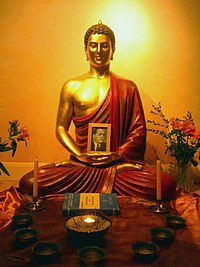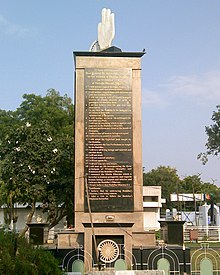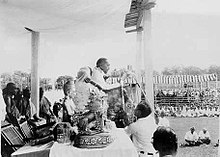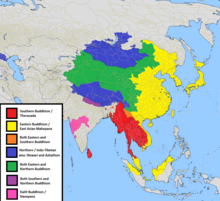ormat: Kindle Edition
4.8 4.8 out of 5 stars
6 ratings 3.6 on Goodreads
37 ratings
Kindle
from $18.99Read with Our Free App
Paperback
$8.07
17 Used from $3.282 New from $50.10Engaged Buddhism is founded on the belief that genuine spiritual practice requires an active involvement in society. Engaged Buddhism in the West illuminates the evolution of this new chapter in the Buddhist tradition - including its history, leadership, and teachings - and addresses issues such as violence and peace, race and gender, homelessness, prisons, and the environment.
Eighteen new studies explore the activism of renowned leaders and organizations, such as Thich Nhat Hanh, Bernard Glassman, Joanna Macy, the Buddhist Peace Fellowship, and the Free Tibet Movement, and the emergence of a new Buddhism in North America, Europe, South Africa, and Australia.
Read less
Length
562
Pages
Editorial Reviews
Review
"This book is crucial reading for all persons who care." -- The Very Rev. James Park Morton, President, The Interfaith Center of New York
"Please read this book with care and compassion for all beings. It is a deep and rich offering, an important look at the work of engaged Buddhists who have acted from their practice. The chapters in this volume show how engaged Buddhists are offering the fruits of their practice in very concrete ways in the West. These writers help us understand and gain inspiration from engaged Buddhism as it is practiced in daily life and in society today. When we study the Lotus Sutra in Plum Village, we discuss the ultimate dimension, the historical dimension, and the action dimension represented by the bodhisattvas practicing engaged Buddhism. In each moment we too can transform suffering and offer relief to ourselves and to society." -- Thich Nhat Hahn
"Here are 20 substantial, well-organized, and readable contributions on diverse groups and topics... the publication of this book could well mark the opening of a new phase in the history of engaged Buddhism." ― Turning Wheel
"A very useful introduction to the diverse, growing, and influential social action movement in Buddhism... at its best, Engaged Buddhism gives solid practial ideas for lay Buddhists to use their practice to avoid harming and to benefit others--prime directives of the Buddhist way." ― The Middle Way
"Shows us how this small and somewhat fringe movement has become a thriving form of Buddhism today... Queen and his coauthors present socially engaged Buddhism in its full diversity, complexity and vibrancy... This book provides a much-needed map, rife with concrete examples of the many manifestations of socially engaged Buddhism in the West. It is a tremendous contribution to the field, both as a resource book and a philosophical tool. The bibliography alone is excellent." ― Inquiring Mind
"These 19 essays trace the history, leadership and teachings that have given shape to this newest chapter in the Buddhist tradition, addressing such issues as violence and peace, homelessness, prisons, the environment, and race/gender inequities. Scholarly and authoritative, it is yet engaging and illuminating, the effect, as Queen says, of 'sitting around a seminar table, listening to a lively conversation.'" ― NAPRA ReVIEW
"Queen masterfully gathers voices from Western groups that practice the ethics of Buddhist engagement... Through caring, charismatic leaders, newsletters and grassroots activity, engaged Buddhist groups focus on the environment, race and ethnicity, gender and sexual orientation, healing and stress reduction, and work as dharma practice. Scholarly yet personal, detailed yet wise to general movements, timely yet historically grounded, this is an absolute must for all who care about changing our world." ― Choice
"Broad in scope, [this book] details the work of organizations and projects throughout the world, working areas such as health, education, commerce, prison reform, the environment, peace and gender equality. Unlike other works of its kind, it reflects a more appreciative tone for the persons, groups, and events shaping the new Buddhism." ― Shambhala Sun
"In twenty absorbing, informative studies exploring Buddhist activism in the western countries and cultures, the contributors address such issues as violence and peace, race and gender, homelessness, prisons, and the environment. Engaged Buddhism in the West is a seminal, benchmark work... and a highly recommended contribution to the growing library of Buddhist literature for the Western reader." ― The Midwest Book Review
"An excellent starting point for taking another good look at what is happening to Buddhism transplanted on america-european soil..." ― The Wheel of Dharma --This text refers to an out of print or unavailable edition of this title.
About the Author
Christopher S. Queen teaches Buddhism and World Religions at Harvard University. He has authored and edited many works on Buddhism, including Engaged Buddhism: Buddhist Liberation Movements in Asia. Chris is also the Convener and Honorary Chairman of the Journal of Buddhist Ethics' online conference on "Socially Engaged Buddhism". He lives in West Newton, Massachusetts. --This text refers to an out of print or unavailable edition of this title.
Read more
Product details
ASIN : B00B77AI7K
Publisher : Wisdom Publications (November 12, 2012)
Publication date : November 12, 2012
Language : English
File size : 9299 KB
Text-to-Speech : Enabled
Screen Reader : Supported
Enhanced typesetting : Enabled
X-Ray : Not Enabled
Word Wise : Enabled
Sticky notes : On Kindle Scribe
Print length : 562 pagesBest Sellers Rank: #564,614 in Kindle Store (
See Top 100 in Kindle Store)#94 in
Social Policy#325 in
Social Work (Kindle Store)#529 in
Government Social PolicyCustomer Reviews:
4.8 4.8 out of 5 stars
6 ratings
Sensei Anthony StultzAn internationally respected expert on Mindfulness and an ordained Buddhist minister, Sensei Tony (asksenseitony.com) is a spiritual teacher and author whose articles have been featured in magazines like, Mindful, Buddhadharma, Lion's Roar and the Elephant Journal. In his book, Free Your Mind: The Four Directions of An Awakened Life, he shared his unique Four Directions System of Mindfulness which has been helping folks find personal freedom and fulfillment for the past 31 years. In his new book, The Three Principles of Oneness: How Embodying the Cosmic Perspective Can Liberate Your Life (October 2019), he will share a novel approach to embracing a spiritual path that is grounded in a scientific understanding of the universe.
Who is Sensei Tony? One of the leading voices in contemporary spirituality, his first personal spiritual experience took place in a little Methodist church in New York when he was only 7 years old. His mother found him hiding in a small sacristy where the minister kept his robes. In a timeless moment, he told her that he was called to help others awaken. When Tony was ten he was introduced to the liberating teachings of Mindfulness. As an adult, he studied with various spiritual teachers (such as Bernie Glassman and Alfred Bloom) and read Buddhism at Harvard and Oxford, receiving a Master’s Degree in Theology from the Episcopal Divinity School.
He is the Founder and Director of The Dragonfly Sangha (1996), The Blue Lotus School of Mindfulness Arts (2000), The Blue Lotus School of Mindful Martial Arts (2001). He is the Founder and Presiding Minister of the Order of the Dragonfly, Ministerial and Community Affiliate member of the Zen Peacemaker Order and Community Affiliate of the Shin Dharma Network. He is the author of The Book of Common Meditation (2003/2019), Free Your Mind: The Four Directions System of Mindfulness (2017), The Invisible Sun (2010/2019), and Free Your Mind: The Precepts of an Awakened Life (2019). He is a contributing author to Lifecycles (2009), Engaged Buddhism in the West (2000), and Action Dharma (2003).
Performed historic Buddhist chaplaincy at Penn State Milton S. Hershey Medical Center (1997-99)
Performed historic Buddhist opening Collect and Prayer at the Pennsylvania State Senate (2007)
Featured Speaker at the first historic Western Socially Engaged Buddhism in America Symposium (2010)
Chaplain to the victims and families of the Sept. 11, 2001 Flight 93 tragedy (2011)
Special Ambassador to the World Congress of Religion (2012)
Chaplain to First Responders at Ground Zero (2015)
Recipient of the Pennsylvania Religion and Society’s Torch of Global Enlightenment Award
(2013)
First Buddhist minister to deliver the opening Collect at the 153rd commemoration of the Gettysburg Address (2016)
Top reviews
Top reviews from the United States

Beth M5.0 out of 5 stars Great BuyReviewed in the United States on November 11, 2016
Verified PurchaseGreat condition!
Helpful
Report
Francois Jullien5.0 out of 5 stars informative and inspiringReviewed in the United States on May 20, 2000
This book definitely provides A LOT of information about wonderful people, projects and ideas curently going on in engaged bouddhist movement. It helped me to fill part of a promising worldwide movement, exciting in many ways : this is one of the active scene of the transformative assimilation of the East by the West. Many references to other books allow to deepen the prefered subjects. This book will detroy the widespread idea that bouddhists spend there time looking at their belly button looking for some unhealthy nothingness. And also if you are buddhist, it really make you think your relationship to the world by facing the good questions : does buddhist engagement mean something ? is engagement in itself a practice or even a yana ? This book really reveals that through its very new contact with the west, buddhism is today already living a transformation, that will perheaps be as deep as the hynayana/mayana transition.
16 people found this helpful
Helpful
ReportSee more reviews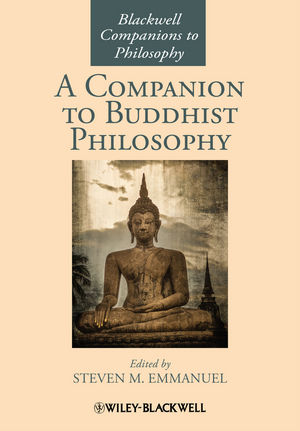




 출간알림 신청
출간알림 신청
 Part of the
Part of the .jpg)
